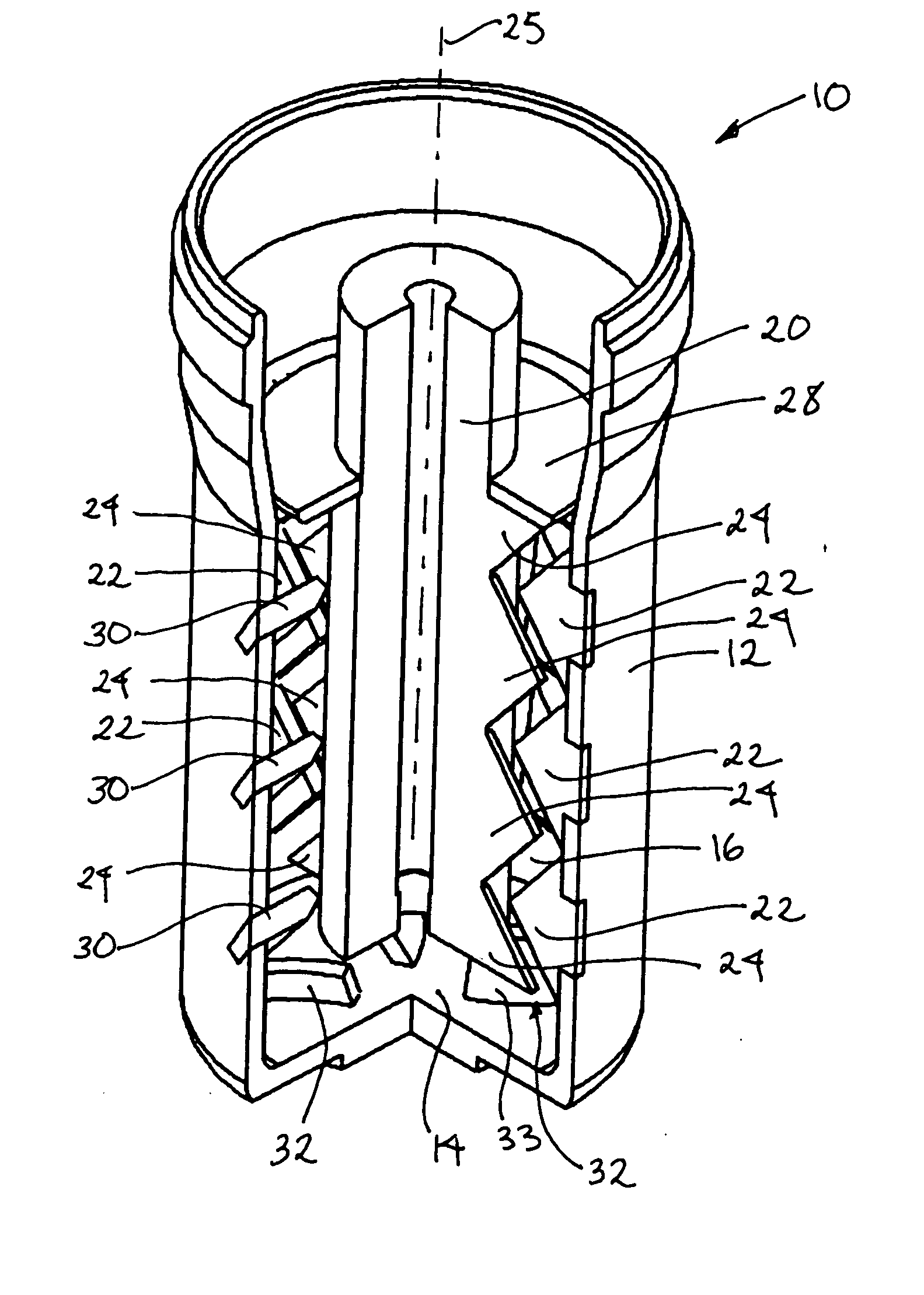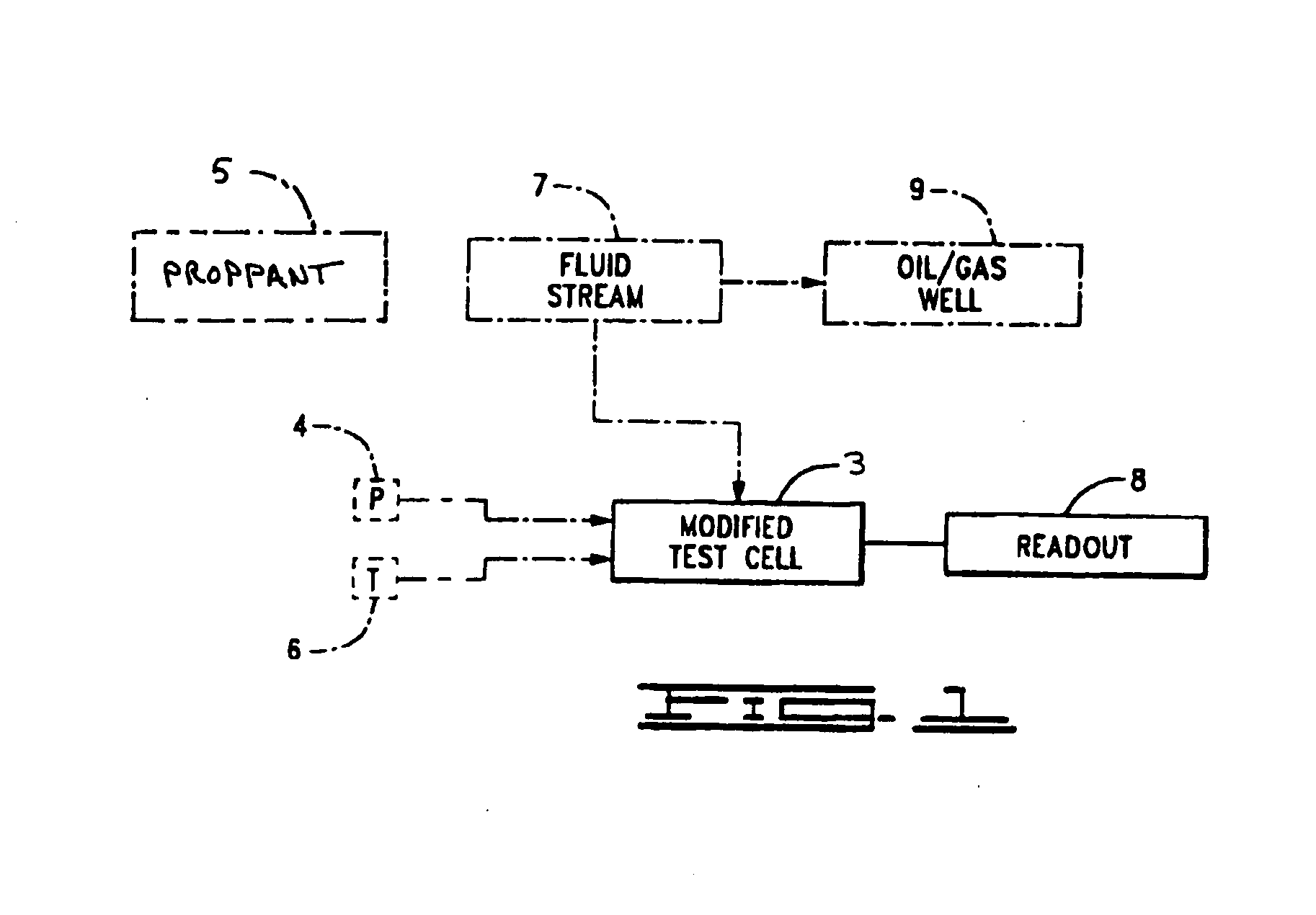Proppant suspension testing devices and methods of use
a technology of suspension testing and proppant, which is applied in the direction of survey, instruments, borehole/well accessories, etc., can solve the problems of crosslink fracturing fluids, difficult to measure elasticity, and difficult to meet the needs of fracturing rheologists
- Summary
- Abstract
- Description
- Claims
- Application Information
AI Technical Summary
Problems solved by technology
Method used
Image
Examples
Embodiment Construction
[0030]The present invention meets the foregoing needs by providing novel and improved devices and method for accurately testing viscous and / or elastic fluids, including ones containing particulate before, during, and after cross-linking and before, during, and after breaking. Such devices and methods directly indicate time periods and simulated conditions during which a tested fluid is supporting particulate in suspension and when the tested fluid is not (i.e., when the particulate is settling out of suspension). In addition, the present invention meets the forgoing needs by providing the means with which to continuously monitor the “suspension state” of the fluid system, thus providing for understanding the dynamics that drive particle settling.
[0031]In general, an apparatus according to the invention is or includes a test cell for use in a viscometer having fins or blades, as hereinafter described in more detail, that function to provide vertical lift and homogenization of the lad...
PUM
 Login to View More
Login to View More Abstract
Description
Claims
Application Information
 Login to View More
Login to View More - R&D
- Intellectual Property
- Life Sciences
- Materials
- Tech Scout
- Unparalleled Data Quality
- Higher Quality Content
- 60% Fewer Hallucinations
Browse by: Latest US Patents, China's latest patents, Technical Efficacy Thesaurus, Application Domain, Technology Topic, Popular Technical Reports.
© 2025 PatSnap. All rights reserved.Legal|Privacy policy|Modern Slavery Act Transparency Statement|Sitemap|About US| Contact US: help@patsnap.com



